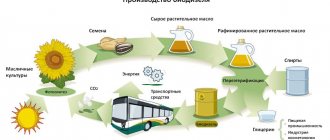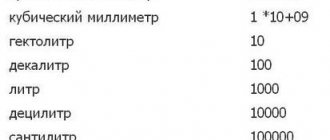If you ask a car enthusiast in what units diesel fuel is recorded, he will no doubt indicate liters. This is true, because during retail sales at gas stations, this indicator is taken into account. However, for manufacturers and wholesale suppliers, another unit of measurement is relevant - tons. In this regard, at enterprises engaged in wholesale purchases for their own needs or further retail sales, the problem of converting diesel fuel into liters is quite acute. Experts who have been involved in the wholesale sale of fuel for many years will tell you how to deal with it yourself!
Density of diesel fuel
One of the factors that must be taken into account when converting diesel fuel from liters to kg is density. According to data from a physics textbook, it is the ratio of mass to volume and depends on the type of fuel and its temperature. Special formulas for calculating density are used extremely rarely. A hydrometer is used to determine it.
The density of fuel is regulated by GOSTs. Thus, for Arctic fuel the indicators are 0.83 kg/l, winter - 0.84 kg/l, summer - 0.86 kg/l. Do not forget that this density is typical for diesel fuel at a temperature of +20°C. In addition, there are recommendations from the Ministry of Industry and Energy and Rostechnadzor. In the first case, the average indicators are 0.769 kg/l. Rostechnadzor proposes to take the density of 0.84 kg/l as the basis for recalculation. To obtain the most reliable data, you need to remember that as the temperature increases or decreases, the density of the fuel also changes.
Buyers do not need to determine the density themselves. The supplier must indicate it in the diesel fuel passport.
Calculation instructions
When the mass is known, it is easy to find out how many liters of fuel and lubricants are in it by performing the following steps:
- We divide the mass in tons or kilograms by the density in t/m3 or kg/m3. We get the volume in m3.
- Multiply by 1000. We will have the result in liters.
An example of calculating the conversion of 1 ton of summer diesel fuel into liters.
- We use the formula V = M x 1,000/p.
- We carry out the calculation: V = 1 x 1,000/ 863.4.
- Convert volume from m3 to l. We get 1,160 liters of summer diesel fuel.
If we take the average density value used by the Ministry of Industry and Energy, we find that 1 ton of diesel fuel contains:
V = 1 x 1,000/0.769 = 1,300 l.
And Rostechnadzor selects the density value from the table for different types of fuel. For diesel fuel it is equal to p = 840 kg/m3. ton of diesel fuel contains as follows:
V = 1 x 1,000/0.840 = 1,190 l.
Converting diesel fuel from liters to tons and back
Despite the fact that the practical conversion of diesel fuel from one unit of measurement to another is quite rare, there is a category of specialists whose work is directly related to this process. When converting from kilograms to liters, it is recommended to use the standard formula:
V = M / ρ, where V is the volume, M is the mass, and ρ is the density of the diesel fuel.
At the same time, do not forget that mass is a constant quantity, and volume and density change depending on the composition of the fuel and temperature.
The reverse conversion from liters to kilograms is carried out similarly. In this case, the formula will look like this:
M = V x ρ.
Examples of converting liters to cubes
Why do people need to know how many liters of diesel fuel are in 1 ton? Everything is simple when it comes to buying small volumes of diesel fuel: we arrived at the gas station, filled the tank full and drove on. However, not all so simple. Companies that purchase large volumes of fuel calculate in other units of measurement - tons or kilograms. And this is completely logical, because the volume of diesel fuel is not a constant quantity and can change. For example, a person will buy 500 liters of fuel in the summer when it’s hot, but in the fall when it gets cold it turns out that there are only 450 liters left in the tank. It turns out that he overpaid the seller 50 liters. And if payment was made for kilograms or tons, then nothing like this would happen, and no one would be at a loss, since the weight remains unchanged.
Therefore, all major sales/purchases of this product are carried out taking into account the weight, and not the volume of diesel fuel, since diesel fuel in tons and liters is not the same thing.
How much does 1 ton of diesel fuel cost?
DT - Diesel fuel wholesale
| Price per ton | |
| Diesel fuel EURO grade C, environmental class K5 (DT-L-K5) Dt grade C Elkhovneft | 52,000 rub. Application price per ton price as of date: 06/01/2021 |
| Diesel fuel EURO, class C, type III DT grade C Nizhnekamsk, Tatarstan, Taif-NK | RUB 53,800 Application price per ton price as of date: 01-07-2021 |
Interesting materials:
How to turn water into ice in Minecraft? How to add a month to a date in Excel? How to nail a plinth to an uneven wall? How does a participle become an adjective? How to make glass shine? How to give your hair a darker shade? How to attach a cockade to a cap? How was the California roll invented? How did you come up with the plus sign? How to invite a girl to the cinema?
How do you know which number to put into the formula?
The Federal Tax Service of the Russian Federation, referring to the order of the Ministry of Energy, believes that the density of the fuel should be determined upon receipt of the fuel batch by measuring it with an oil densimeter - a special measuring device such as a hydrometer.
If the device is not available, then use the average density values of diesel fuel, which can be obtained from the local branch of Rostekhnadzor.
Gasoline conversion
The density of gasoline varies in the range of 0.70 kg/l - 0.78 kg/l.
When recalculating, the above formula is used, into which, in the absence of instrumental measurement of fuel density, the average value ρ is substituted:
- For AI-80 0.715 kg/l;
- AI-92 0.735 kg/l;
- AI-95 0.750 kg/l;
- AI-98 0.765 kg/l.
Conversion of kerosene
The density of kerosene varies, depending on the brand, in the range: 0.775 kg/l - 0.85 kg/l. Examples:
- lighting kerosene brand KO-30: density 0.790 kg/l;
- lighting kerosene brand KO-20: density 0.83 kg/l;
- Hydrogenated aviation kerosene for supersonic aircraft: density 840 kg/l. Etc.
Conversion of kerosene from liters to tons is carried out using the method described above after determining or establishing the density value.
Call the number. It’s convenient with us, delivery 24/7
Fuel Specific Gravity
Specific gravity is the ratio of the weight [P] of any substance in question to its volume [V], namely weight, and not mass, as many people think. However, there is no particular difference for us here; these are only distinguishable concepts from a scientific point of view and cannot be confused in any way. It has become so common in everyday life that weight is mass.
The specific gravity of a substance [y] can also be expressed through its density [p]: y=p*g
where g is the acceleration of gravity at a specific point in space, it is usually considered equal to 9.81 m/s*s.
The unit of measurement for hydrocarbons is 1 N/m3 (Newton divided by cubic meter).
Weight of 1 liter of diesel fuel (diesel fuel)
Based on the density values of diesel fuel given above, it is easy to calculate the weight of 1 liter of diesel fuel. It will vary from 830 grams to 860 grams, that is, the higher the temperature of the diesel fuel, the lighter 1 liter of it will weigh.
We recommend reading interesting articles:
- Density measuring device
- How to use a hydrometer
offers a low price for diesel fuel with delivery throughout the Urals.
Specific gravity is calculated by multiplying the density by the gravitational acceleration factor, which is always 9.81 m/s2. For example, 1 kg of diesel fuel with a density of 840 kg/m3 will have a specific gravity of 8240 N/m3.
The density of diesel fuel plays an important role. It changes when the fuel temperature changes. When the temperature changes by 1 degree Celsius, the density changes by a factor of 0.0007. When the temperature decreases by 1 degree, the density increases, and when the temperature increases, it decreases.
Check out our prices:
How many liters are in one ton of diesel fuel?
We calculate the value for all types of diesel fuel:
- Summer. Divide 1000 kg by 860 kg/m3, we get 1.1628 cubic meters. We convert to liters, taking into account that 1 cubic meter is a thousand liters, regardless of any additional influences. We get 1162.8 liters. We perform similar calculations.
- Winter. 1190.5 liters.
- Arctic. 1204.8 liters.
We remember that the actual volume of liquid is constantly changing and depends on the above factors.
If you still encounter any difficulties, you can always refer to reference books and special proven tables. With their help, you can easily convert tons to liters and find out the number of standard barrels or buckets of flammable substances. A specialist will also answer all questions. He will dispel all doubts, provide information support, make the necessary calculations and discuss all the nuances of the transaction with the customer.
Formulas for calculating density, weight and volume of diesel fuel
Formula for determining the weight of diesel engines
The weight of the fuel is determined by multiplying the density of the petroleum product by its volume. 1850 liters of diesel fuel with a density of 0.840 kg/m3 will weigh 1554 kg. 1000 liters of diesel fuel with a density of 0.860 kg/m3 will weigh 860 kg.
Formula for determining the volume of diesel fuel
A pressing question for transportation, sales and accounting is: how to convert the weight of fuel into volume?
To find out the volume of diesel fuel, you need to divide its mass by its density. If there is 1 ton of diesel fuel, and its density is 0.840 kg/m3, the volume will be 1,190 liters 476 grams.
Conversion formulas
The volume and mass of a liquid are related by the formula: M = V ρ,
where M is the mass of the liquid in tons, V is its volume in m³, ρ is the density in t/m³.
In real practice, managers prefer to deal with tons (fuel purchases) and liters (sales). If the above formula is expressed in terms of these quantities, it will look like this:
M = V ρ /1000
- where ρ is the density of the liquid in kg/l (numerical value),
- V – volume of liquid in liters;
- M – mass of liquid in tons.
To find out, for example, how much 1000 liters of diesel fuel with a density of 0.83 kg/l weigh, we substitute the values in the formula to obtain the mass in tons:
M = 1000 · 0.83 / 1000 = 0.83 t.
The reverse conversion (from tons to liters) is carried out using the formula V = M · 1000/ρ (weight in tons, density in kg/l, volume in liters).
Fuel (diesel, gasoline, and kerosene) physically do not have a constant density - it depends on the temperature of the liquid, decreases with increasing temperature, and increases with its fall.
That is why the conversion of the available mass of fuel into volume for each value of the liquid temperature will give different values. A change in temperature, as well as the possible evaporation of part of the liquid, will change both the mass and, accordingly, the density of the substance. If we neglect evaporation, then the main action when converting mass into volume and vice versa becomes the establishment of the density of the liquid.
Calculation formula for different brands of fuel
The reason that large quantities of fuel and lubricants are counted in tons and not in liters is the property of diesel fuel to change its volume with temperature changes. As it increases, the density of the fuel decreases and the volume of diesel fuel increases. As the temperature decreases, the density increases and the volume decreases. But the mass remains the same, and when working with it, confusion does not arise due to the expansion of the liquid.
Converting tons to liters is easy; to do this, you need to use the formula:
V = M/p,
where V is volume, M is weight or mass, p is the density of diesel fuel.
It turns out that in order to find out the volume of fuel, knowing the weight in tons, you only need one additional value - the density of diesel fuel. It depends not only on the brand of diesel fuel, but also on temperature. This property of fuels and lubricants is sometimes used for reporting fraud in order to illegally increase consumption.
GOST 305-2013 defines density values for different brands of diesel fuel at a temperature of 200C:
- for summer and off-season diesel fuel – 863.4 kg/m3;
- for winter – 843.4 kg/m3;
- for Arctic brands – 833.5 kg/m3.
If, during testing, the density does not correspond to the declared one, then such fuel does not receive a quality certificate. The Ministry of Industry and Energy of the Russian Federation officially adopted the average indicator for all types of fuel - 769 kg/m3.
A density higher than the standard indicates a low-quality diesel engine with heavy fractions. To obtain good quality fuel, you need to work with conscientious suppliers. values its reputation and only high quality diesel fuel











